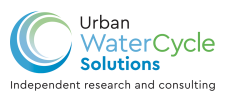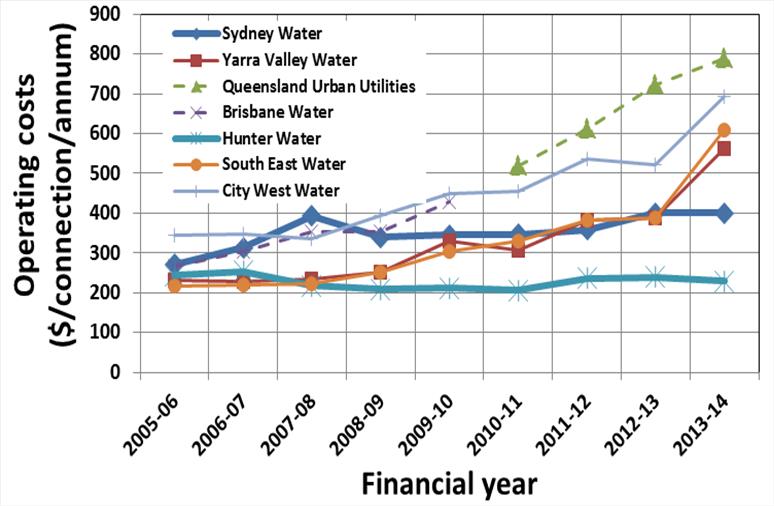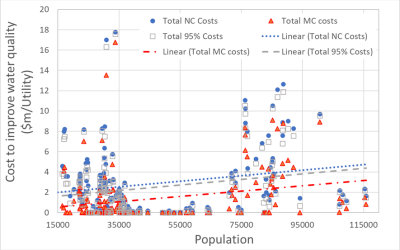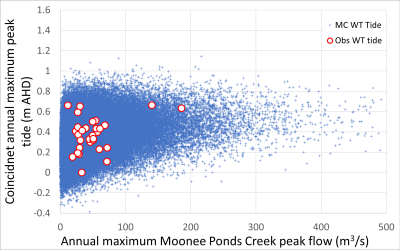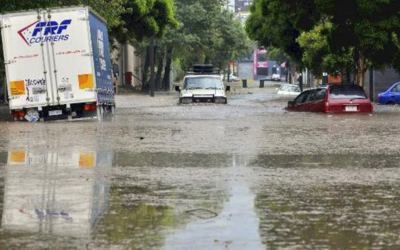 No health epidemics from rainwater supply in Australia
No health epidemics from rainwater supply in Australia
There has been a rush to claim widespread health risks from rainwater supplies in water monopoly funded publications. It is claimed that pathogens and lead are a common problem. However, nobody is dying from rainwater supply in Australia. Rainwater harvesting systems have not generated health epidemics or widespread public health notifications from Chief Medical Officers. However, there is a push to privatise water monopolies throughout Australia – this involves dismissing competing water sources to maximise the perceived value of these businesses owned by the bureaucracy.
We should be mindful that rainwater is an important source of water supply – the Australian Bureau of Statistics reports that over 2.41 million households use rainwater harvesting systems and 0.89 million households are reliant on rainwater for drinking water supplies throughout Australia. Over 111,100 urban households are reliant on rainwater for drinking water supplies. In addition, the 1.13 million rainwater harvesting systems in urban areas made a substantial contribution to ensuring Australian cities did not exhaust water supplies during the last drought. These rural and urban rainwater harvesting systems have not created health epidemics and have provided real world public health results that confirmed epidemiological research by Heyworth and Rodrigo. This comprehensive research has established that drinking rainwater does not generate increased risks of illness. Similarly, regular maintenance of rainwater harvesting systems is carried out and problems are resolved by citizens as outlined by the Australian Bureau of Statistics.
Nevertheless, recent water industry publications (such as the IWA rainwater book) are dismissive of this independent research and have omitted or misrepresented many of the author’s publications. Indeed, a decade of the author’s independent research on this topic was not included in discussions. For example, it is claimed the PCR (Polymerase Chain Reaction) methods identified high levels of pathogens in rainwater harvesting systems but do not acknowledge the nation-wide PCR investigations of rainwater quality by Evans et al (2010) that did not find this result. Similarly, the research from Spinks et al (2006) that established that domestic hot water services eliminated pathogens that are unlikely to be present in rainwater and the Spinks (2007) incidental rainwater treatment train that improves the quality of rainwater from roof to tap is not acknowledged. There are many other examples of selective discussion.
However, two important critical issues are highlighted in this blog. The first issue relates to the claim that presence of e. Coli in rainwater indicates faecal contamination and, therefore, health risks.
In 2006, the author (Coombes et al., 2006; “Key Messages from a Decade of Water Quality Research into Roof Collected Rainwater Supplies”) highlighted that there were a large number of harmless environmental strains of e. Coli that may be present in environmental waters such as rainwater that do not indicate faecal contamination or health risks. In contrast, the recent water industry publications (which do not acknowledge this publication) insist that the presence of e. coli indicates faecal contamination. In addition, it is highlighted that faeces from mammals may contain rare pathogenic strains of e. coli. In contrast, the author (and many other researchers) highlight that a majority of water borne pathogens originate from higher order mammals such as humans and cows. It is unlikely that humans or cows would be defecating on roofs connected to rainwater tanks.
Importantly the research results from Coombes et al. (2006) has now been confirmed by Lou et al. (2011) in the National Academy of Sciences – there are more than 89 environmental species of e. Coli and the reliability of e. coli and coliform tests of environmental to indicate faecal contamination is questioned. Simply put, this result partially explains the statement by Cunliffe (2004) in the ENHealth Guidelines that results of water quality testing was inconsistent with public health impacts – illness resulting from rainwater supplies is rare.
The second issue relates to the claim that rainwater harvesting systems do not provide any economic benefits. Similarly, water industry publications omit or misrepresent the many research and policy publications by the author. For example, the systems analysis underpinning the arguments to initiate the BASIX policy in NSW (published in Coombes, 2005 ; Coombes, 2007) and the Systems Framework investigations underpinning the Living Victoria policy (published in Coombes and Barry, 2014) highlight substantial economic savings of integrated and distributed solutions.
For example the expected benefits provided by water efficient appliances and rainwater harvesting are now confirmed by the audited data from the water industry as shown in the above Figure. The water operating costs for utilities subject to BASIX performance targets for sustainable buildings (Sydney Water and Hunter Water) is compared to the water operating costs of utilities (City West Water, South East Water and Yarra Valley Water) that operate in jurisdictions without targets for sustainable buildings.
Growth in water operating costs of utilities in jurisdictions with BASIX legislation has significantly reduced in comparison to water operating costs of utilities in areas without mandates for sustainable buildings. This result has verified the systems analysis conducted by the author. Moreover, the New South Wales government has determined that the BASIX legislation mandating 40% reductions in household water use will provide cumulative reductions in mains water use of over 300 GL and in greenhouse gas emissions of over 102 million tonnes at a net present value of $843 million to 1.2 billion to 2050.
The rush to dismiss alternative water sources and independent research in favour of solutions that failed to anticipate the recent drought may be locking Australians into a high cost water future. Similarly, the claims about widespread health risks appears to be selective and alarmist – possibly irresponsible given that many Australians are dependent on rainwater supplies. Water industry funded publications are quick to claim problems but do not offer any solutions. In contrast, a simple water filter on a drinking water tap could resolve perceived water quality problems. It seems that claims about rainwater supplies are strongly related to the push to privatise water monopolies. In any event, the audited data from the National Water Commission and recent research has confirmed the research results published by the author in the 2000s.
Cunliffe, D. A. (2004). Guidance on use of rainwater tanks. EN Health Council. Department of Health and Ageing. Australian Government.
Heyworth, J.E. (2001). A diary Study of Gastroenteritis and Tank Rainwater Consumption in Young Children in South Australia, 10th International Rainwater Catchment Systems Conference, Weikersheim, Germany, 1, 141-148.
Luou C., Walke S., Gordand D. M., Feldgardene M., Tiedjef J. M., and Konstnatinidisa K.T., (2011). Genome Sequencing of environmental Escherichia coli expands understanding of the ecology and speciation of model bacterial species. Proceedings of the National Academy of Sciences.
Details of the author’s publications can be found at https://urbanwatercyclesolutions.com
